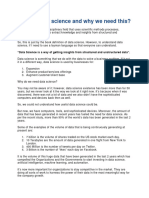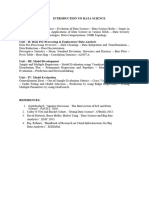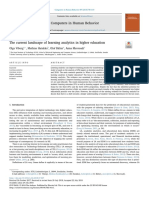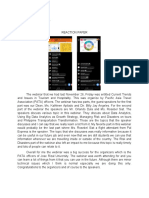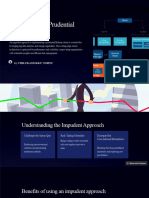0% found this document useful (0 votes)
22 views29 pagesClass X Data Science
Data science is an interdisciplinary field that utilizes scientific methods to extract insights from structured and unstructured data, combining expertise in programming, mathematics, and statistics. It is crucial for organizations to develop data science capabilities to remain competitive in the era of big data, with applications ranging from fraud detection to recommendation systems. The data science lifecycle includes stages such as data capture, processing, analysis, and communication to inform decision-making.
Uploaded by
mittalkrish51Copyright
© © All Rights Reserved
We take content rights seriously. If you suspect this is your content, claim it here.
Available Formats
Download as PDF, TXT or read online on Scribd
0% found this document useful (0 votes)
22 views29 pagesClass X Data Science
Data science is an interdisciplinary field that utilizes scientific methods to extract insights from structured and unstructured data, combining expertise in programming, mathematics, and statistics. It is crucial for organizations to develop data science capabilities to remain competitive in the era of big data, with applications ranging from fraud detection to recommendation systems. The data science lifecycle includes stages such as data capture, processing, analysis, and communication to inform decision-making.
Uploaded by
mittalkrish51Copyright
© © All Rights Reserved
We take content rights seriously. If you suspect this is your content, claim it here.
Available Formats
Download as PDF, TXT or read online on Scribd
/ 29



































